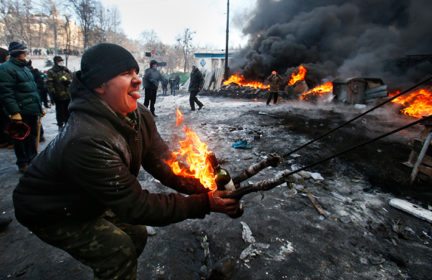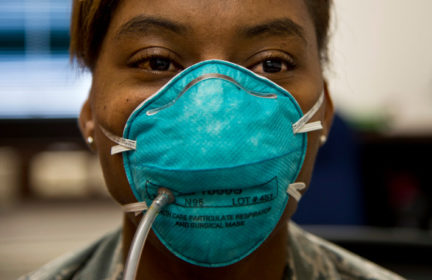How to survive and avoid incidents of civil unrest
Three friends were hanging out at an amusement park in Vancouver, BC. They decided to leave the park and drive over to the Sea Festival about ten miles away.
They had to park and walk about a mile to get to the festival. As the three of them walked toward the festival, they heard yelling and laughter. They thought that what they had heard was true and that people were having a lot of fun at this festival.
The yelling and laughter drew closer and finally a stream of youths ran past them. Then they saw riot police coming toward them.
Two of them wanted to turn and run away because they were afraid. The other friend told them, “No, don’t move, face toward the police and put your hands in the air.”
The three friends stood facing police, hands in the air.
A riot policeman approached them and before he could say anything, the young man who told his friends to stand still, told the police officer, “We just got here. We don’t know what’s going on.”
The policeman then summoned fellow officers who helped escort the three young men back to their vehicle. They were told what route to take to get out of the area.
They found out that a riot had broken out at the Sea Festival. The laughing and yelling youths who had ran past them were actually rioters who had smashed storefronts and caused a lot of damage.
If the three unsuspecting friends had turned and ran, they would have considered part of the rioting group.
How you react when suddenly confronted with a situation like this can make or break your survival of it.
This was a relatively benign example from an actual incident that took place in Canada in the 1970’s. However, we are not all fluffy little teddy bears up here. In Vancouver BC, the riots after a hockey game are legendary.
Civil unrest and encounters with mobs are a more common threat today, so it is worthwhile to understand the risk and how to prepare for it.
The term “mob mentality” conveys the single minded and unpredictable mind set of a mob. When it overtakes a group of people for any reason, the situation devolves and becomes dangerous rapidly.
The first consideration is not to become exposed to such a threat. Avoidance is the first and most important practice for managing risk.
Don’t go where the trouble is located and that includes online sites.
There are some preparedness people who advocate following the social media of groups who engage in civil unrest. This is a bad suggestion.
You are known by your associations. These groups are heavily monitored by government security and law enforcement agencies.
Your electronic footprint does not want to be stepping anywhere near these kinds of groups. In other words, don’t go dancing in the barnyard, if you don’t want to end up with cow manure on your boots.
It makes better sense to monitor and set an alert through legitimate news media or local civic alert systems.
If you are caught in a mob unawares as the three men in the opening story, then take measures to get out of it as fast as you can.
Don’t resemble the people in the mob. Remove anything that is similar to their clothing, if possible and within reason. For example, if they are all wearing hats, remove your hat or ball cap. You will be less likely to be identified as one of them on security cameras or by law enforcement.
Don’t talk to people in the mob and watch your nonverbal communication.
Stay calm, head down and keep moving at a steady pace. Don’t run or draw attention to yourself. Spawning salmon behavior will be counterproductive and can get you noticed.
Go with the flow and calmly move toward the outer edges of the mob at a steady pace. Avoid any areas or bottlenecks where you could be crushed.
This is where situational awareness can’t be stressed enough. Always know the area that you are in and how to navigate it. You need to know how to exit the mob at the first safe and accessible place.
That could be a side street or an alley. There may be a safe building or even a safe doorway that you can take shelter in. If you take shelter in a building, know where the exits are located in case it becomes an unsafe place in which to shelter.
If you are concerned that you could be crushed or thrown off balance because of a crowd surge, lock your elbows in a bent position and use them to push down on the crowd so that they propel you forward. Stay on your feet.
If you are in your vehicle, you have options. You can turn around if possible and get out of there or make your way to a safer street.
Some advocate to drive forward if there are only a few people in the situation and your vehicle is not a target. I would still turn around and avoid the situation. How do you know hundreds of people aren’t going to come pouring around a corner?
Regardless of the number of people involved, your vehicle could be targeted in an instant. Then you will be faced with the possibility of hitting someone with your vehicle. You may also find your vehicle rendered inoperable because it is suddenly surrounded and damaged. It’s your choice.
If at home during periods of civil unrest, stay away from windows, keep your doors locked. Do not go outside to see what’s going on. Use your security cameras to monitor the situation outside.
Move away from walls where bullets or rocks could penetrate and injure you.
Watch for fires and the smell of smoke. Fires can begin in riots, so keep watch until it is over.
Continue to monitor the situation at home to ensure you are certain that it is over.
-
Comments (8)
-


